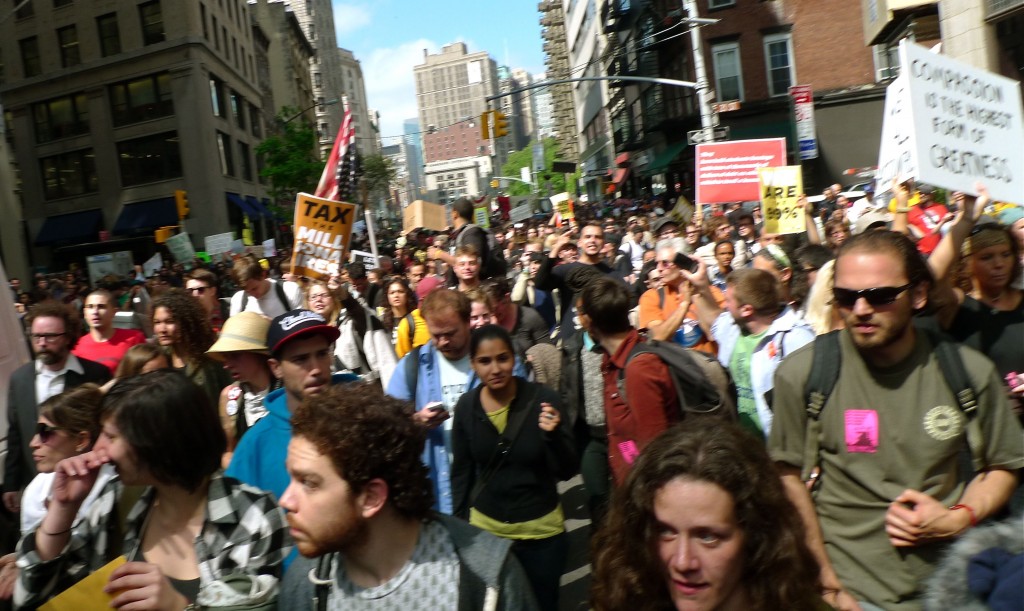I’ve been meeting and talking with my Occu-buddies and while everyone is still tired, there seems to be some agreement about the lessons learned on May Day. Without presuming to speak for the movement as a whole, as ever, here’s my set of takeaways, for what it’s worth.
- The People’s Assembly was amazing and did not have a chance to get beyond its opening statements. Let’s have more!
- Occupy now knows how to engage public space with disruptive and challenging non-violent direct action in ways that the police cannot prevent, like the 99 Pickets, the Guitarmy, street art and performance. Marches are great to emphasize our numbers but the actions are what we remember.
- It may not be the best goal of the movement in New York City to aim for a permanent occupation in public space. Salon reported–whether accurately or not–that Marisa Holmes and others were frustrated at the way the People’s Assembly at Vietnam Veterans Memorial Park turned into a discussion about an occupation. I remember a series of challenges at the Assembly by certain self-styled leftists to live up to the legacy of the Zapatistas and so on. I’ve been to Chiapas. It’s a place with a 500 year-old history of resisting colonial occupation and an indigenous population with substantial reason to engage in personal risk to do so. Sleeping in a New York City park is not the same thing.
- That’s not to say we give up on occupation! Pop-up occupations like that in Bryant Park on May Day are beautiful and energizing. A building might be another way to approach this issue, as Lisa Fithian has suggested. An outdoor occupation could be mobile, on the river (why not?), or in disputed space.
- At the same time, the reason why such a strategy might not work is the incredible willingness of the NYPD to use overwhelming force on a basis that they know will later be held to be illegal. It’s important to know and make visible how spectacular police repression is in the supposed capital of the free world.
- Free University! This was a fabulous success and was the part of May Day most reminiscent of Liberty Plaza in its day-to-day mode of permanent discussion. There’s already impetus to sustain the energy for more sessions. There don’t have to be full-blown courses, as OccU has already pioneered that strategy. It’s more about a place of intersection for academic and movement knowledges, a mutually reinforcing moment.
- The connection to immigrant rights and movements is a vital step, as this excellent video shows:
Such coalition building is hard work but most positive.
The impetus now is given by the May Pole: all our grievances are connected. May 15 is the European day of action–May 1 being so “normal” a holiday–and with elections in France and Greece likely to increase pressure on the all-austerity-all-the-time program, we need to work in conjunction with their social movements. There is increased tension in Egypt and uncertain outcomes ahead in their presidential election that may generate further momentum in the Arab world revolution. This is and was always a planetary movement, in which one sector now leads, then follows.
On the march downtown, I measured the response to the chants launched across the varying crowds I marched with. Clear winner:
Get up! Get down!
There’s a revolution in this town!
Is there? Not yet, of course, in the sense of 1789 or 1917. Mostly social change does not happen like that, however, as the very few dates available for such citations suggest. It often happens unevenly in response to people changing their own circumstances or to external forces beyond local control. I wonder if that isn’t what’s happening now?

